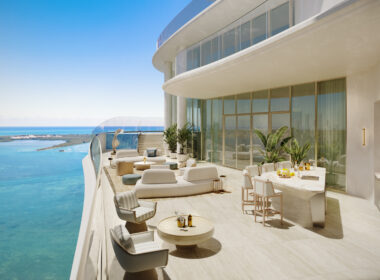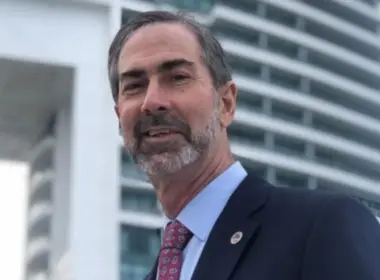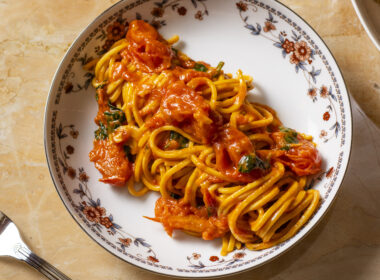Each December Miami undergoes a transformation, as a tsunami of artists, curators, gallerists, patrons, and spectators flood the city for seven days collectively known as Art Week. The shining star of the week-long art scene is Art Basel Miami Beach (ABMB), America’s most comprehensive international contemporary art fair, which returned to the Miami Beach Convention Center for its 21st iteration. Art Basel Miami alone drew 79,000 attendees to its showcase, up from 76,000 last year.
Also drawing in visitors were the concomitant shows Design Miami and Art Miami, along with smaller satellite shows such as NADA, Scope, Tribeca Festival at Art, and Alcove, all contributing to Art Week’s economic impact of more than $500 million and visitor total of more than 100,000 people. As Miami Beach Mayor Dan Gelber succinctly assessed the impact, “More private jets show up to Art Basel than to the Super Bowl.”
IMPACT OF ART BASEL MIAMI BEACH
For Art Basel alone, a total of 277 galleries from 33 countries showcased a diverse array of art, including 25 new galleries from the U.S., Mexico, Brazil, France, the Netherlands, Poland, and Egypt. Leading art patrons and private collectors from over 92 countries and territories visited the fair. In addition, representatives from more than 200 cultural institutions were also in attendance, representing MoMA (New York), the National Gallery of Art (Washington, D.C.), Serpentine Galleries (London), and Centre Pompidou (Paris), to name just four of the most distinguished.
Art Basel reported brisk business. Collectors spent tens of millions of dollars, with the Hauser & Wirth gallery logging the most expensive purchase – $20 million for Philip Guston’s 1979 oil painting, “Painter at Night.” Other big-ticket sales included the $9 million acquisition of Marlene Dumas’ painting “The Schoolboys,” Willem de Kooning’s “Untitled VII,” which sold for $7 million to $8 million (final price undisclosed), and two “Infinity Net” paintings by Yayoi Kusama that sold for $3.2 million and $3 million respectively.

This year saw the inauguration of Access by Art Basel, a new online art sales platform designed to support philanthropy, which launched with 15 participating galleries. For each purchase, collectors were required to make a charitable pledge, amounting to a minimum of 10 percent of the artwork’s price. The artist and their gallery received the full value of each sale, with the charitable donation going to the collector’s choice of The Miami Foundation or The International Committee of the Red Cross (ICRC). To date, Access by Art Basel has raised more than $100,000.
OUTSIDE OF ART BASEL (MIAMI ART WEEK)
Design Miami, held across the street from the Art Basel display at the Convention Center, celebrated its 19th year with a stunning panoply of historic and contemporary collectible designs. Installations included, “The Land of Light,” by Ukrainian artist Victoria Yakusha, a piece intended to symbolize hope amidst the violence in her war-torn country. The Dutch Rademakers Gallery showcased the design duo of Rive Roshan (Ruben de la Rive Box and Golnar Roshan), who created ridged pink-hued glass sculptures and contrasting 3D-printed sand vessels, with the stated intention of shifting perceptions of objects in space.
Other shows coinciding with the main fair included exhibitions at local museums, such as The Bass Museum of Art, which featured works by Miami-based Hernan Bas and Korean-German artist Anne Duk Hee Jordan; the Institute of Contemporary Art, which presented a large-scale collection by Charles Gaines, plus a new sculptural work by rising Canadian artist Tau Lewis; and the Pérez Art Museum Miami displayed a retrospective of work by American artist Gary Simmons.
The other major Art Week event is Art Miami, which, in its 33rd year, is the city’s oldest art fair. A leading international contemporary and modern art fair, Art Miami in 2023 featured more than 240 exhibitors from 31 countries and showcased the work of more than 900 artists.
Ramón Cernuda of the Cernuda Arte gallery in Coral Gables, an expert in Cuban art, has exhibited at Art Miami for the past two decades. This year, he took a 1,200-square-foot space and sold 26 pieces, including a work by the renowned Cuban painter Wilfredo Lam, whose 1942 work, “Personage with Hat” sold for $1 million. “I prefer Art Miami to Art Basel,” says Cernuda, “because it focuses more on 20th-century art, whereas Art Basel is ultra-contemporary and experimental, with a jet setter ambiance.”
Other satellite events during the Art Basel week included NADA (New Art Dealers Alliance), which presented its 21st edition at Ice Palace Studios in Downtown Miami with over 150 galleries, art spaces, and nonprofit organizations spanning 50 cities worldwide. The independent fair Untitled Art, in its 12th edition on the sands of Miami Beach, promoted galleries from outside the mainstream, with a reported attendance of 55,000 and 166 exhibitors from 38 countries. Alcova, a Milan-based design fair, took advantage of a refurbished motel on Biscayne Boulevard, turning each room of the Selina Gold Dust into an individual booth.
And only in Miami could an installation such as “MAZE: Journey Through the Algorithmic Self” be conceived and brought to fruition. Chilean artist Sebastian Errazuriz (with the help of AI) constructed a full-scale walkable maze made from sand in front of the Faena Hotel. All paths led to a small central plaza intended for contemplation and conversation, a kind of metaphor for the experience of contemporary art itself.












